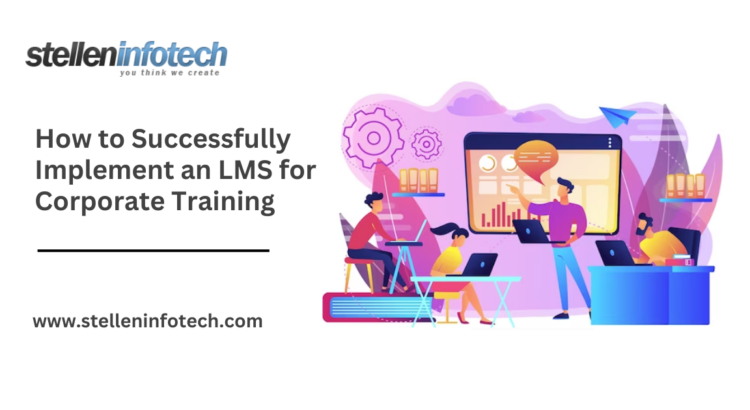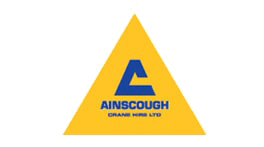Corporate training has become a popular as well as important part of the organization for business growth. It has given rise to the practice of incorporating learning management systems into business to complete employee training needs. However, implementing the LMS projects for successful online training is not an overnight process. It needs careful consideration and proper planning & strategy for successful execution just like when choosing the right LMS Development Software.You have to choose the right cloud-based learning management system, set up your account, add training content, and set up controls & employee accounts.
Further, you have to test it and make adjustments based on trial feedback before making such training programs live.
Key Steps To Successfully Implement Your LMS Employee Training Project
For learning and development teams of organizations, it’s important to walk through a step-by-step LMS development & implementation process. So, without any further ado, let’s get started!!
Set Your Corporate Training Goals
Make sure to ask business executives or directors about which department needs training or exactly who they are looking to train. Plus, ask them how much of a percentage of improvement they are looking for. For example, for a retail business, a corporate training goal should not only be to increase sales. But, the goal actually needs to be ‘to increase sales by 20% from last year.’
Identify Employees Learning Needs
The second step is to identify your learner’s learning needs. This means, asking the employees about which business matters they are lacking behind. Also, you can ask senior management teams about this to create an effective LMS course. After all, they have performance records of each employee and can suggest better learning needs or areas where employees need improvements.
Establish A Plan, Strategy & Timeline
The next step is to plan your learning management system training project implementation. Besides, having a plan always helps to implement and execute the process effectively. While setting your LMS launch criteria, make sure to add timelines as well. It will give you an idea about the duration of your LMS development project.
Assign Roles To Every L&D Team Member
From creating training content and administrating LMS platforms to helping users, there are lots of roles and responsibilities associated with corporate training programs. This makes it essential to assign separate roles to each L&D team member so that everyone can collaborate better. It will help them to contribute and launch a successful training program.
Create Employee Training Content
This step is quite tricky, that’s why, keep your content informative, effective, and most importantly simple. Make sure to launch your corporate training program with only one course at one time. Ultimately, your goal is to prove that well-implemented LMS training programs actually work.
To create a simple, informative, and effective LMS course, follow these steps
- Understand your future learner’s learning needs
- Prepare course outline
- Write the LMS course script
- Design the LMS course draft
- Demonstrate the course for trail
- Make adjustments based on feedback
- Launch The Final LMS Training Courses At Platform
Announce LMS Launch & Notify Employees
Often taken for granted, announcing the LMS launch date officially can make all the difference in making success to achieve employees’ training goals. Here, you can make official announcements or email announcements to notify the organization about such important updates. After all, a cloud-based learning management system plays a critical role in business growth, so everyone in your organization should know about it.
Set It Up (Your LMS Account & Course)
This is a core step in the learning management system implementation process. Here you will set up your business account on your chosen LMS platform and customize the account settings, like adding a company logo. Then you will add employee information and set up users’ accounts and integrate the platform with the business website and other communication platforms. Also, make sure to set up some LMS settings and provide access to managers or team leaders to track their performance and growth.
Assign Online Training With Completion Dates
If you want your employees to take such effective training programs seriously, make sure to add deadlines while notifying them of training assignments. Simply select the users who need corporate training and launch your LMS course and add the course competition date. It will automatically notify them of an assignment as well as the due date to complete it.
Monitor The Course Completion Rates
After a few days when you launch the course, make sure to monitor the course completion rates. Checking completion rates will give you an idea about how many employees have completed their assignments and how many are still left. Furthermore, you can contact such employees and ask them to complete their LMS. Besides, it will let you know about technical issues and resolve them promptly if any of your employees are facing them while navigating.
Final Step: Evaluate The Results & Progress Of LMS Training
Now you have successfully implemented your cloud-based learning management system. So, it’s time to check out the LMS training results and evaluate the progress of your employee’s knowledge, skills, and improvements. Also, provide the employee progress reports to executives to check whether such programs are serving training needs and contributing to business growth. Eventually, you will have a positive effect on your employee’s online learning needs to achieve business goals. And above all, you will get more knowledgeable & skillful employees, increased productivity, and high business revenues.






















































